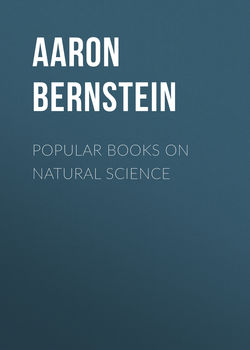Читать книгу Popular Books on Natural Science - Bernstein Aaron David - Страница 7
PART III.
NUTRITION
CHAPTER IV.
HOW NATURE PREPARES OUR FOOD
ОглавлениеIn the preceding article it was stated, that the food of the child which lives on mother's milk, consists in its primary elements of peculiar substances. These are principally oxygen, hydrogen, and nitrogen; three gases to which may be added a large quantity of carbon, or, what is the same, coal. Besides this wondrous mixture of air and coal, the mother's milk contains still other elements, but in a smaller proportion. In every-day life many of them are unfamiliar; for example, natron, calcium, magnesia, chlorine, and fluor; the others, however, are known to every one; viz., iron, sulphur, and phosphorus. All these strange ingredients nature has carefully transformed into milk. For in their primary state, and even in various chemical combinations that may be produced artificially, they would be little adapted for the purpose. It is therefore essentially necessary that nature herself should make them ready for us. This she does by letting them pass first into the vegetable state, and changing them afterwards into new forms.
The plant feeds on primary chemical elements; or, to state it more correctly, the plant is nothing but transformed primary elements! Not before the transformation of these elements into plants are the elements adapted for food for animals and men.
Moreover, all that man eats must first have been in the vegetable state. Now, it is true that man also eats the flesh, fat, and eggs of animals; but whence have the animals meat and eggs? Only from the plants they consume.
There is a remarkable succession of transformations in nature. The primary elements nourish the plant; the plant nourishes the animal; and both, plant and animal, form the nourishment of man.
Even the mother's milk, the simplest and most natural food of the child, owes its existence only to the fact that the mother has eaten vegetable and animal matter. This food, prepared for the mother by nature, has been changed into the body of the same; and partly, also, it has become the milk destined to nourish the child.
Hence it is evident that mother's milk consists of oxygen, nitrogen, hydrogen, carbon, and a small portion of other chemical primary elements. But these substances when appearing in the shape of milk, are combined in such a manner as to form ready-made food; as such they constitute, as stated above, caseine, butyrine, sugar of milk, salt, and water.
The next questions are: "What do these elements of food perform when in the child's body? What becomes of these substances after they have been eaten by the child? How are they changed during the time of their stay in the body? And in what condition do they leave the child's body, and how do they force him to desire food again?"
These questions properly belong to the chapter on "Nutrition," where they will be answered in their turn. Afterwards, we must be permitted to turn our attention to a further question, viz., "What articles of food are the most advantageous to man from the time he is weaned or the time, he takes from among vegetable and animal matter the same substances for food, that are contained in the mother's milk?"
In order to arrive at the answers to all these questions, we were obliged to first prepare the ground a little. This was a gain on our part, for now we shall attain the end in a shorter time than would have been possible otherwise. We trust that we may give our reader a correct idea of the subject, if he will but come to our aid with his most earnest attention and reflection; these are needed here the more, as we have to treat a difficult subject in a very short space.
